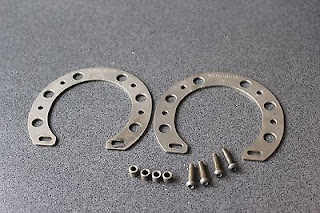I've never owned a full-suspension bike. My Jamis Dakota and Bontrager Race Lite mountain bikes had telescoping front forks, but no suspension built into the frame. Perhaps if I had kept with mountain biking longer than I did (I stopped about 15 years ago), I might have such a setup now.
These days, my suspension consists of the sprung saddle on my Fuji commuter/beater--and my joints.
Folks like Jan Heine will tell you that you don't need suspension if you ride the right tires. He's right:
These days, my suspension consists of the sprung saddle on my Fuji commuter/beater--and my joints.
Folks like Jan Heine will tell you that you don't need suspension if you ride the right tires. He's right:


























